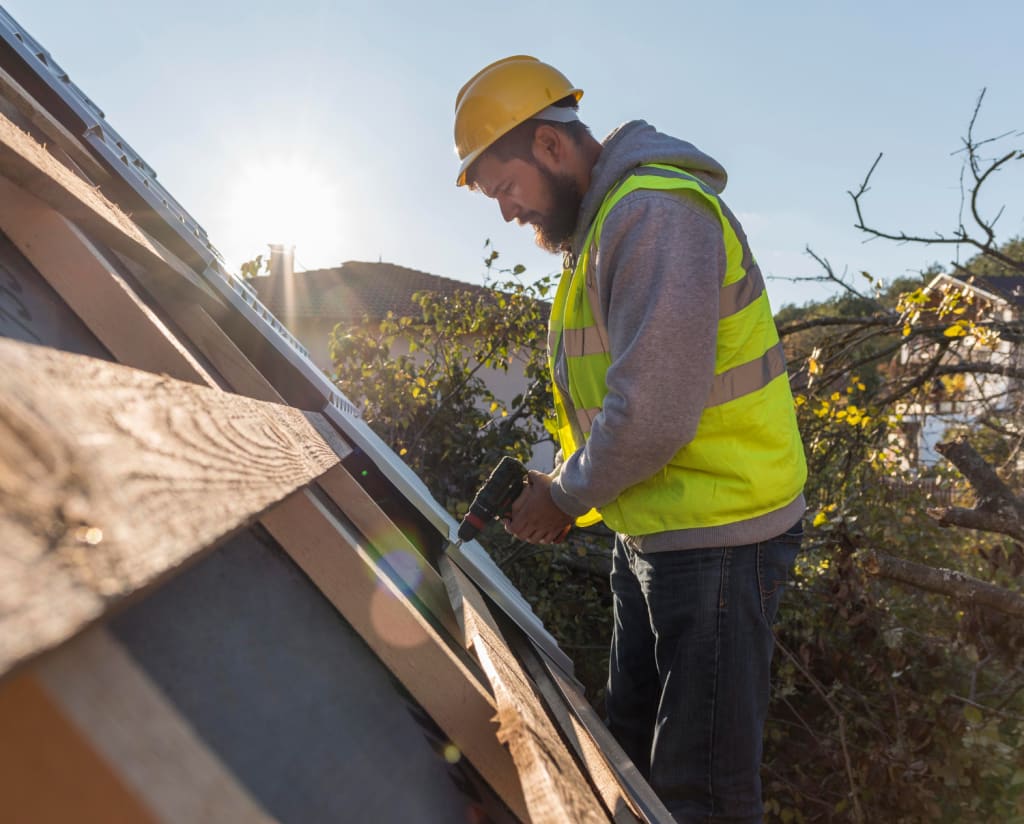5 Signs It's Time to Contact Professional Roofing Contractors
Continue reading to explore the five crucial signs that indicate it's time to call a professional roofing contractor.

Your roof is more than just a protective cover over your home; it's a shield that guards you and your loved ones from the external elements. However, even the most robust roofs start showing signs of wear and tear over time. Ignoring these signs can lead to significant damage and costly repairs. But what are these signs? Don’t worry; this guide has got you covered.
Continue reading to explore the five crucial signs that indicate it's time to call a professional roofing contractor. By recognizing these signs early, you can save yourself from potential headaches and hefty expenses in the future.
Visible Roof Damage: The Clear Indicators
Whether it's cracked or missing shingles, sagging areas, or evident leaks, these issues should never be ignored. Here are some of the visible signs of roof damage:
Cracked, Curled, or Missing Shingles
Shingles are your roof's first line of defense against harsh weather. However, due to age, wind, or other environmental factors, they can become cracked, curled, or even fall off completely. Damaged shingles can lead to water infiltration, which may cause extensive damage to your home's interior.
Granules in the Gutters
Asphalt shingles shed granules over time. These granules are essential for protecting your roof from UV rays; their loss can compromise your roof's effectiveness.
Water Stains on Ceilings or Walls
Water stains inside your home are a direct indication of a leaking roof. These stains are often found on ceilings or walls and can vary in color from yellow to brown. Ignoring these stains can lead to mold growth, which poses health risks and further structural damage.
2. Aging Roof: The Silent Deterioration
Every roof has a lifespan, generally ranging from 20 to 30 years for asphalt shingles, while other materials like metal or tile can last even longer. Knowing the age of your roof can help you anticipate when it might need repair or replacement. Here's how to assess if your roof is nearing the end of its life:
Look for Worn Out Materials
As your roof ages, the materials can become brittle and less effective at protecting your home. Common signs of aging include cracked or curling shingles, rust on metal roofs, and deteriorating flashing around chimneys and vents.
Increased Energy Bills
An old or damaged roof can affect your home's insulation, leading to higher heating and cooling costs. If you notice a sudden spike in your energy bills, it may be due to a failing roof that no longer provides adequate insulation.
3. Frequent Leaks: The Persistent Menace
While an occasional leak might be fixable, frequent leaks indicate a more significant issue that needs professional attention. Recurring leaks can lead to severe water damage, mold growth, and structural problems.
Inspect for Repeated Leak Locations
If you are dealing with frequent leaks in the same area, it's a sign that your roof has a persistent problem. This could be due to poor installation, worn materials, or structural issues that a roofing contractor must address.
Evaluate Weather Impact
Severe weather conditions often exacerbate frequent leaks. High winds, heavy rain, and snow can worsen existing problems and create new ones. A roofing contractor can assess the damage and recommend solutions to prevent future leaks.
4. Roofing Material Deterioration:: The Hidden Threat
Different roofing materials age and deteriorate at varying rates. Identifying the signs of material wear can help you determine when it's time to call a roofing contractor.
Asphalt Shingles
Asphalt shingles are prone to cracking, curling, and losing granules over time. These issues reduce their ability to protect your home from water and UV damage.
Metal Roofing
Metal roofs can rust, corrode, or develop loose panels. While metal is durable, it requires regular maintenance to prevent leaks and other issues caused by exposure to the elements.
5. Storm Damage: The Unseen Threat
Storms can wreak havoc on your roof, causing immediate and sometimes hidden damage. After a heavy storm, it's crucial to have your roof inspected by a professional to identify and repair any issues.
Check for Obvious Damage
After a storm, inspect your roof for visible damage, such as missing or damaged shingles, dents, or fallen tree branches.
Look for Hidden Damage
Storms can cause hidden damage, such as small punctures or loosened roofing materials that may not be immediately visible. A roofing contractor can conduct a thorough inspection to evaluate and repair these issues before they escalate.
Conclusion
Your roof acts as a defensive system for your home from weather and environmental hazards. Regular maintenance and prompt action are crucial to extend its lifespan and functionality. By staying vigilant and proactive, you can ensure that your roof continues to protect your home. Don't wait until it's too late. If you notice any of these signs, contact a roofing contractor today to schedule an inspection and keep your home safe and secure.
About the Creator
Enjoyed the story? Support the Creator.
Subscribe for free to receive all their stories in your feed. You could also pledge your support or give them a one-off tip, letting them know you appreciate their work.





Comments
Mash Roofs is not accepting comments at the moment
Want to show your support? Send them a one-off tip.